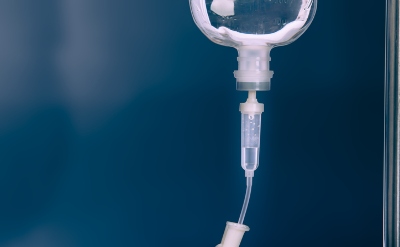The addition of oleclumab or monalizumab to durvalumab consolidation therapy improved outcomes in comparison to durvalumab monotherapy in patients with unresectable, locally advanced non–small cell lung cancer (NSCLC), according to phase 2 study results presented at the 2021 European Society for Medical Oncology Congress.
Durvalumab is the standard-of-care consolidation therapy for patients with stage III unresectable NSCLC who do not progress following definitive chemoradiotherapy. However, it has been suggested that combination therapy may lead to more robust responses than durvalumab alone.
“CD73 is involved in radiotherapy resistance,” wrote Alex Martinez-Marti, medical oncologist, Vall d’Hebron Institute of Oncology (Barcelona, Spain), and colleagues. “Radiotherapy induces NKG2A ligand and shows additive antitumour effects with PD-1 blockade preclinically.”

The open-label COAST trial evaluated two monoclonal antibodies — the anti–CD73 agent oleclumab and the anti–NKG2A agent monalizumab — given in combination with durvalumab to durvalumab alone in this patient population.
A total of 189 patients were randomly assigned to treatment at least 42 days after completing chemoradiotherapy. Durvalumab was prescribed every 4 weeks at an intravenous dose of 1500 mg, either alone (n = 66), with oleclumab (3000 mg every 2 weeks for two cycles, then every 4 weeks; n = 59), or with monalizumab (750 mg every 2 weeks; n = 61). Treatment continued for up to 12 months.
Objective response rate (ORR) served as the study’s primary endpoint, with progression-free survival (PFS) and safety as secondary endpoints.
The median follow-up for the entire cohort was 11.5 months (range, 0.4-23.4). The researchers observed improvements in ORR for patients assigned durvalumab plus oleclumab (n = 23; 38.3%) and durvalumab plus monalizumab (n = 23; 37.1%) when compared with monotherapy (n = 17; 25.4%).
The median PFS for patients assigned monotherapy was 6.3 months (95% CI, 3.7-11.2). The median PFS for durvalumab plus oleclumab was not reached (HR = 0.44; 95% CI, 0.26-0.75), and the median PFS for durvalumab plus monalizumab was 15.1 months (HR = 0.65; 95% CI, 0.49-0.85).
In addition, the 10-month PFS rate sharply favored both durvalumab plus oleclumab (64.8%; 95% CI, 50.4-76) or durvalumab plus monalizumab (72.7%; 95% CI, 58.8-82.6) over durvalumab alone (39.2%; 95% CI, 26.1-52).
Rates of grade 3 or higher treatment-emergent adverse events were similar for patients assigned to monotherapy (39.4%), durvalumab plus oleclumab (40.7%), and durvalumab plus monalizumab (27.9%). In both the durvalumab monotherapy and durvalumab plus oleclumab arms, commonly observed adverse events included pneumonia (5.9%) and decreased lymphocyte count (3.2%).
“Combined rates of pneumonitis and radiation pneumonitis of any grade were 21.2% with durvalumab, 28.8% with durvalumab plus oleclumab and 21.3% with durvalumab plus monalizumab, with grade 3 events in 3.0%, 3.4% and 1.6%, respectively,” the researchers wrote.
Photo Credit: Getty Images











